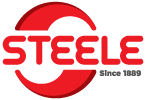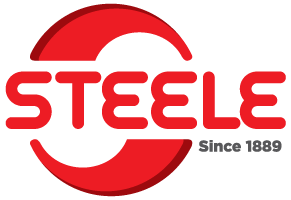
Mark joined Steele late in October 2020 and we keep him busy. A former assistant professor of geology at Texas A&M (Kingsville) and veteran geologic consultant, he specializes in geochemistry, characterization of rocks and engineered materials, and mining and mineral resources.
Understanding the customer’s materials and how to unlock their value guides the development of Steele’s engineered process solutions. As our chief scientist and laboratory manager, Mark works primarily with iron, steel and ferro alloy customers. He leads our lab in qualifying dusts and other production residues, developing material mixes to run through our extruders for furnace feedstock.
His experience makes engineering scalable byproduct solutions more efficient. Supporting green steel and the circular economy has to balance the competing concerns of mill management, production engineers and furnace operators.
Mark’s incoming materials expertise teams with Steele technology for commercial feasibility. He notes, “Making zero-carbon steel is currently inefficient, but our solutions support that goal and deliver a shaped product worth more than it costs to make.”
Scaling specific solutions for green steel
Dust and fines, which result from every phase of steelmaking, require agglomeration to create value. Mark and the lab technicians prepare the raw material, which is either fine-grained or must be crushed, then formulate the appropriate binder for mixing.
As Mark notes, the binder depends on the application. Steele’s stiff extrusion requires minimal binder and added water, so the customer can recycle more high-grade metal and carbon units. “This is a sustainable solution,” Mark says. “Steele stiff extrusion generates lower CO2 emissions than the industry sinter standard and green extruded briquettes come out of the die ready to ship.”
The Steele lab consults with furnace operators and downstream consumers to engineer specific binder formulations and feedstock performance. Mark and his colleagues are now working on melt recipes that use biochar. This is charcoal made from plants that serves as the reductant to remove oxygen. And unlike fossilized carbon, biochar is renewable.
We make dust useful
Most dust has no value – it’s difficult to ship and costly to landfill. We convert that dust into a useful, shippable product, engineered for specific properties in the furnace. If we’re developing feedstock for an electric arc furnace, for example, we might tailor a two percent magnesium extruded pellet. We reduce the aluminum and silica content that EAF operators don’t want, while delivering consistent performance in the furnace. Steele pellets and briquettes handle multiple transfers and generate minimal dust.
Our lab development keys on delivering an extruded product with a process that scales. We start with benchtop extrusion, then move from benchtop to testing with our mobile test plant. Once we’ve customized feedstock that meets with your furnace operators’ approval, we can scale production all the way up to 120 metric tons per hour with our 120 Series extruder.
Read more about Steele engineering and lab resources here. Or contact us here to discuss your application and product requirements — we’ll introduce you to Mark Ford and his colleagues in the Steele lab.

